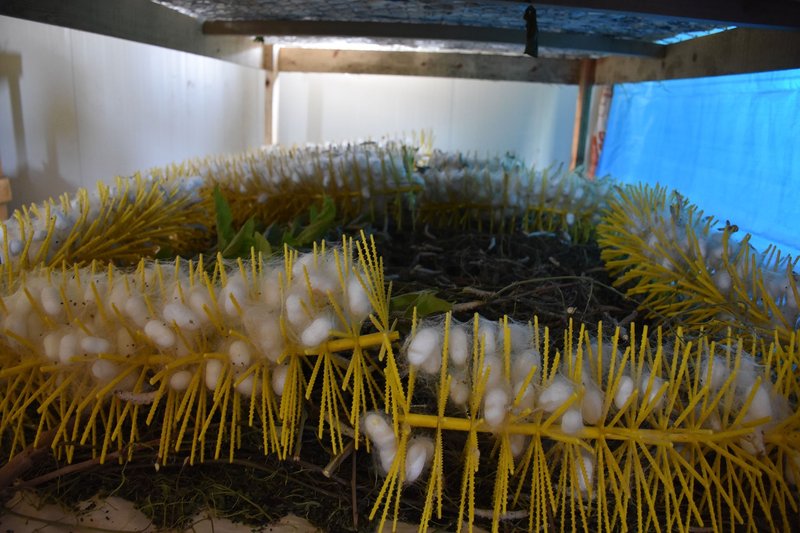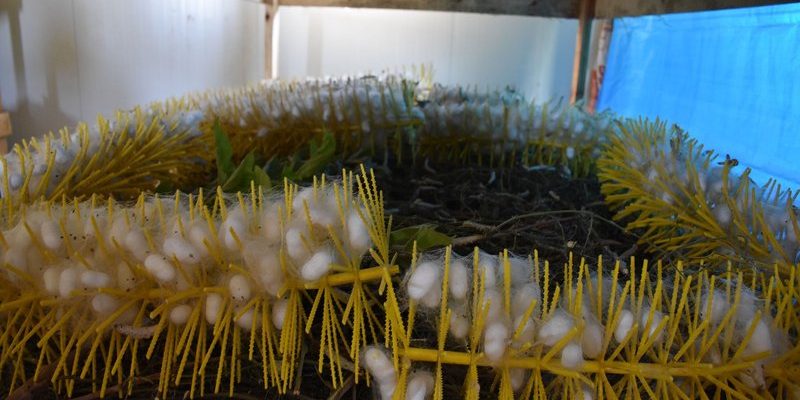
Silkworms are not just any ordinary critters; they’re the star players in the textile world. Their silk has been valued for thousands of years and is still sought after today. Starting a mini silkworm farm is a fun and educational project, and it can even spark your interest in sustainable practices. Plus, it’s a nifty way to learn about life cycles, biology, and agriculture, right from your home. Let me guide you through the steps of building your own silkworm paradise.
Understanding Silkworms and Their Needs
Before you dive into farming, you need to know what silkworms really need to thrive. Silkworms are the larvae of the *Bombyx mori* moth, and they have some specific requirements to grow strong and healthy. Here’s the scoop on their basic needs:
- Food: Silkworms exclusively eat mulberry leaves. It’s like their favorite snack! You can buy mulberry trees or even grow them from cuttings.
- Temperature: Silkworms thrive in a warm environment, ideally around 70°F to 80°F (21°C to 27°C). Keep them away from drafts and direct sunlight.
- Humidity: A humid environment is key. Aim for around 60-70% humidity to keep them comfortable and healthy.
You might be wondering why they require such specific conditions. Here’s the thing: just like us, silkworms are picky about their environment. If you give them what they need, you’ll be rewarded with healthy, thriving worms that can produce a wealth of silk.
Setting Up Your Silkworm Habitat
Now that you know what your silkworms need, it’s time to create the perfect habitat. Think of it as building a cozy home for your little silk-makers. Here’s how to get started:
1. **Choose a Container:** You can use a simple plastic bin or cardboard box. Make sure it has good ventilation. Silkworms need air, so avoid containers that are too airtight.
2. **Layer for Comfort:** Place a layer of absorbent material like paper towels or newspaper at the bottom of the container to soak up any excess moisture. This keeps your worms comfortable and helps prevent mold.
3. **Add Mulberry Leaves:** Once you have your container ready, start adding fresh mulberry leaves. These should be placed in a way that allows the silkworms to easily munch on them. You can replace the leaves every few days to ensure they have fresh food.
4. **Monitor the Environment:** Invest in a simple thermometer and hygrometer to keep an eye on temperature and humidity. Adjusting the environment as needed will make a big difference in your silkworms’ growth.
Creating the right habitat is crucial for a successful mini silkworm farm. If you control their environment, they’ll thrive, and you’ll be on your way to producing silk!
Feeding Your Silkworms
Feeding silkworms is pretty straightforward, but there are a few tips to ensure they are happy and well-fed. Their growth relies heavily on the quality and quantity of food they receive.
– **Fresh Mulberry Leaves:** Always use fresh leaves. Wilted or dried leaves won’t provide the nutrients they need. Think of it like feeding a pet—you wouldn’t want to give them spoiled food!
– **Quantity Matters:** Typically, a silkworm will eat about 300 times its weight during its growth. So, keep an eye on how many worms you have and adjust the number of leaves accordingly.
– **Frequency of Feeding:** Younger silkworms (first instar) require feeding several times a day, while older worms can handle fewer feedings. As they grow, they eat more!
This feeding routine is essential because, during their larval stage, they can grow dramatically in size. If you’re interested in raising healthy silkworms, make sure they’re well-fed!
Watching the Life Cycle
One of the most fascinating aspects of raising silkworms is witnessing their life cycle. From tiny eggs to beautiful moths, each stage is an amazing transformation. Here’s how it all works:
1. **Egg Stage:** Silkworms start as tiny eggs, which are usually laid by adult moths. They can hatch within 10 days, depending on temperature and humidity.
2. **Larval Stage:** Once hatched, they enter the larval (caterpillar) stage. This is when they do most of their eating and growing. In about 6 weeks, they can grow to over 3 inches long!
3. **Cocoon Stage:** After reaching their full size, they’ll spin a cocoon around themselves using silk. This process can take around 3 to 4 days, and it’s where the magic happens!
4. **Moth Emergence:** After about 10 days inside the cocoon, they will emerge as adult moths, ready to start the cycle all over again.
Witnessing this life cycle can be incredibly rewarding. Not only do you get a front-row seat to nature’s wonders, but you also gain a deeper appreciation for the silk that comes from these little creatures.
Harvesting Silk: The Final Step
Once your silkworms reach maturity and have spun their cocoons, it’s time to think about harvesting the silk. This step is both exciting and delicate. Here’s how you can do it:
1. **Timing is Key:** Wait until the cocoons are fully formed. They should be firm and compact. A good indicator is if they feel like little balls.
2. **Boil the Cocoons:** Carefully place the cocoons in boiling water for about 5-10 minutes. This process kills the pupae and helps you extract the silk threads.
3. **Unraveling the Silk:** After boiling, let the cocoons cool a bit. You can then use a pair of tweezers and gently pull the silk threads from the cocoon. You can get about 1,000 yards of silk from a single cocoon!
4. **Preserving the Silk:** After harvesting, you should store the silk in a cool, dry place, as it can be sensitive to moisture and temperature.
Harvesting silk is a bit of an art form, but it’s an exhilarating way to complete your mini silkworm farm adventure. Plus, you’ll have tangible results to show off!
Common Challenges and Troubleshooting
Like any farming endeavor, raising silkworms comes with its own set of challenges. But don’t worry; most can be easily managed! Here are a few common issues and how to tackle them:
– **Mold Growth:** If you notice mold in the habitat, it might be due to excess moisture. Ensure good airflow and remove any uneaten leaves.
– **Temperature Fluctuations:** If your silkworms seem sluggish or aren’t eating, it might be too cold. Try to maintain a consistent temperature in their habitat.
– **Overcrowding:** As they grow, silkworms need space. If they’re too crowded, they can stress and die. Make sure to transfer them to larger containers if needed.
These challenges might seem daunting, but they’re all part of the learning experience. By staying attentive and adjusting your approach, you’ll build a successful mini silkworm farm.
Starting a mini silkworm farm in your backyard can be an incredibly rewarding experience. Not only do you get to observe nature’s magic firsthand, but you also contribute to sustainability by producing silk right at home.
With a little patience and an understanding of these creatures’ needs, you’ll be well on your way to enjoying the delightful world of silkworm farming. So, are you ready to take the plunge? Grab some silkworms, mulberry leaves, and create your own slice of nature in your backyard. Happy farming!

